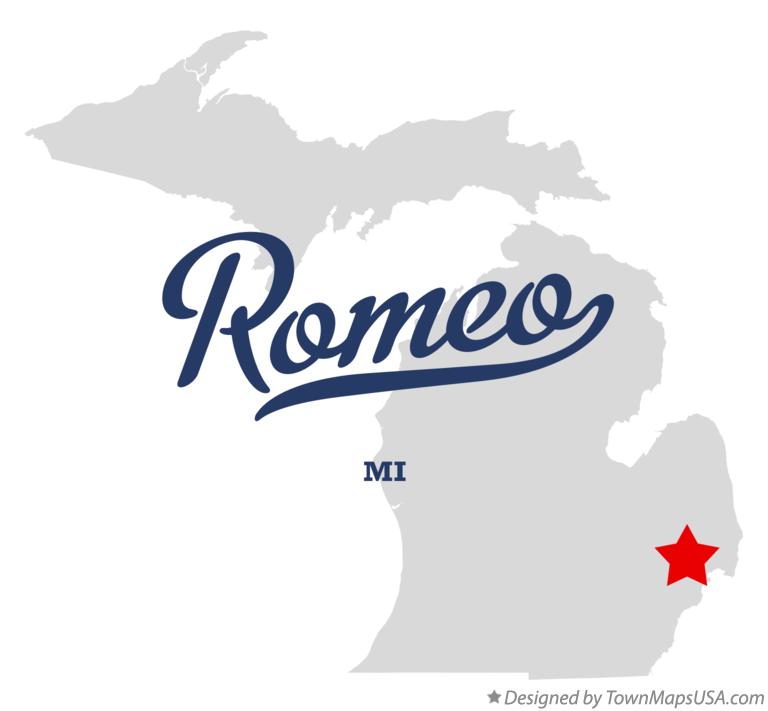Romeo History

Romeo was originally named “Indian Village” because of the Chippewa Indians who inhabited the area. In the 1820s and 1830s, New Englanders, upstate New Yorkers, as well as Canadian, Irish, English, and Scottish immigrants soon settled in the area. It was later named “Hoxie’s Settlement” after Mr. Hoxie opened an Inn on Main Street. Many settlers became merchants and business owners by farming, lumbering, and trading. It was later named “Romeo” in the spring of 1830 when Mr. Nathaniel T. Taylor’s (first merchant) wife suggested the name as “it was short, musical, classical and uncommon”1
Established as a village on March 9, 1838, Romeo became a leading trading center during the nineteenth century. In 1859, Romeo was the second largest village in the county behind Mount Clemens. To put that into perspective, the population of Mount Clemens in 1850 was 1,3022 and the population of Romeo in 1850 was 330.2 Romeo had many businesses, including “a hoop-skirt factory, a broom factory, a chair factory, an iron foundry, a cigar factory, a sash and blind factory,” and four separate carriage manufacturing companies “one with patronage as far west as California."1 In 1870, the village listed 124 businesses in its registry.8 Residents of Romeo were also involved in nineteenth-century reform as the town was a station in the Underground Railroad, engaged in prohibition efforts, welcomed guests like Senator Zachariah Chandler (abolitionist, Detroit mayor, Michigan senator, and Secretary of the Interior under President Grant), Elizabeth Cady Stanton (women’s rights activist) as well as President Grant’s Vice President, Schuyler Colfax. 1,3,9
Transportation was also transformative for Romeo throughout its history. In 1830, the stage line ran through Romeo only three years after a line was established from Detroit to Toledo.4 In 1870, Michigan Air Line Railroad came, then in 1879, Grand Trunk Railroad moved into Romeo.8 From 1898-1934, the Detroit United Railway (D.U.R.) Interurban Streetcars could be found traveling down Main Street.8 In 1907 when Ford was having problems getting engine parts in Detroit, Romeo foundry answered the call and casted cylinder jugs for Ford’s Model-N car.8 From 1908-1910, the foundry was the exclusive source of Ford’s Model-T engine castings.8,10
In 1970, Romeo Historic District was awarded the National Register of Historic Places and designated as a Michigan State Historic Site. Today, many come to Romeo in the fall for its annual Peach Festival and Terror on Tilson events. The Romeo Peach Festival began in 1931 when then village President, Edward E. Jacob, and local farmers wanted to promote economic growth for the town.7 It soon evolved into a large festival, complete with activities, parades, shows, and even the annual Romeo Peach Festival Queen Pageant.7 Terror on Tilson is growing in popularity as well. What started out as a few houses decorating their houses and yards for Halloween has grown into many houses participating and has become part of a two-block spectacle.6 Tens of thousands of people come to Romeo for events such as these, which shows how the community is trying to preserve its downtown nostalgia and history.